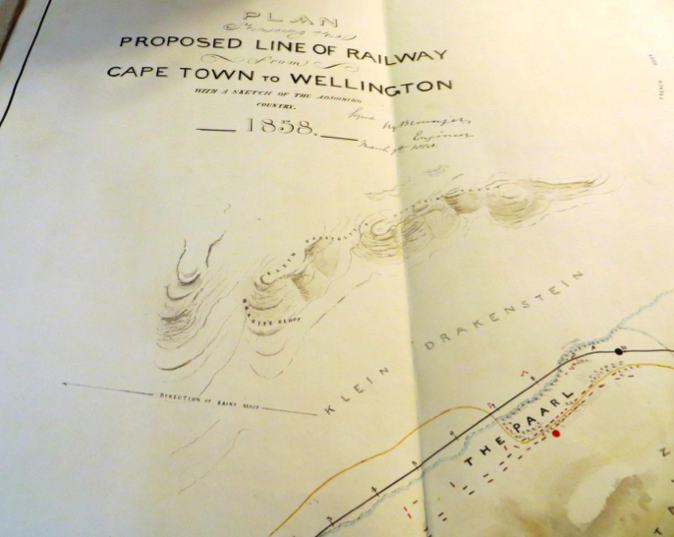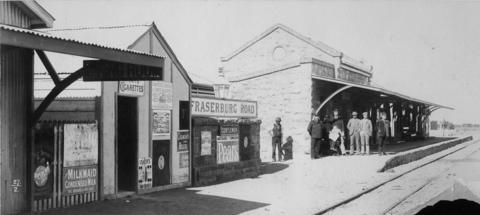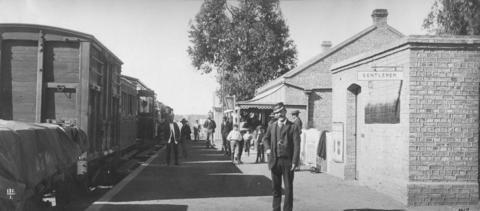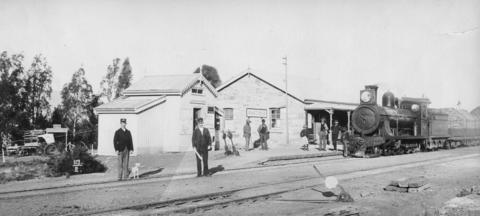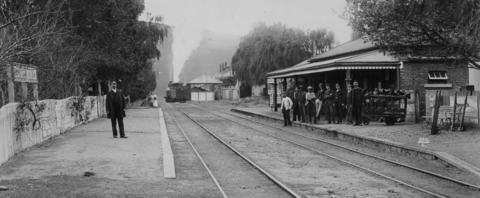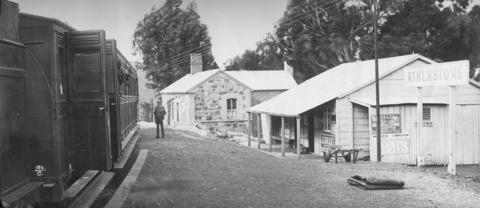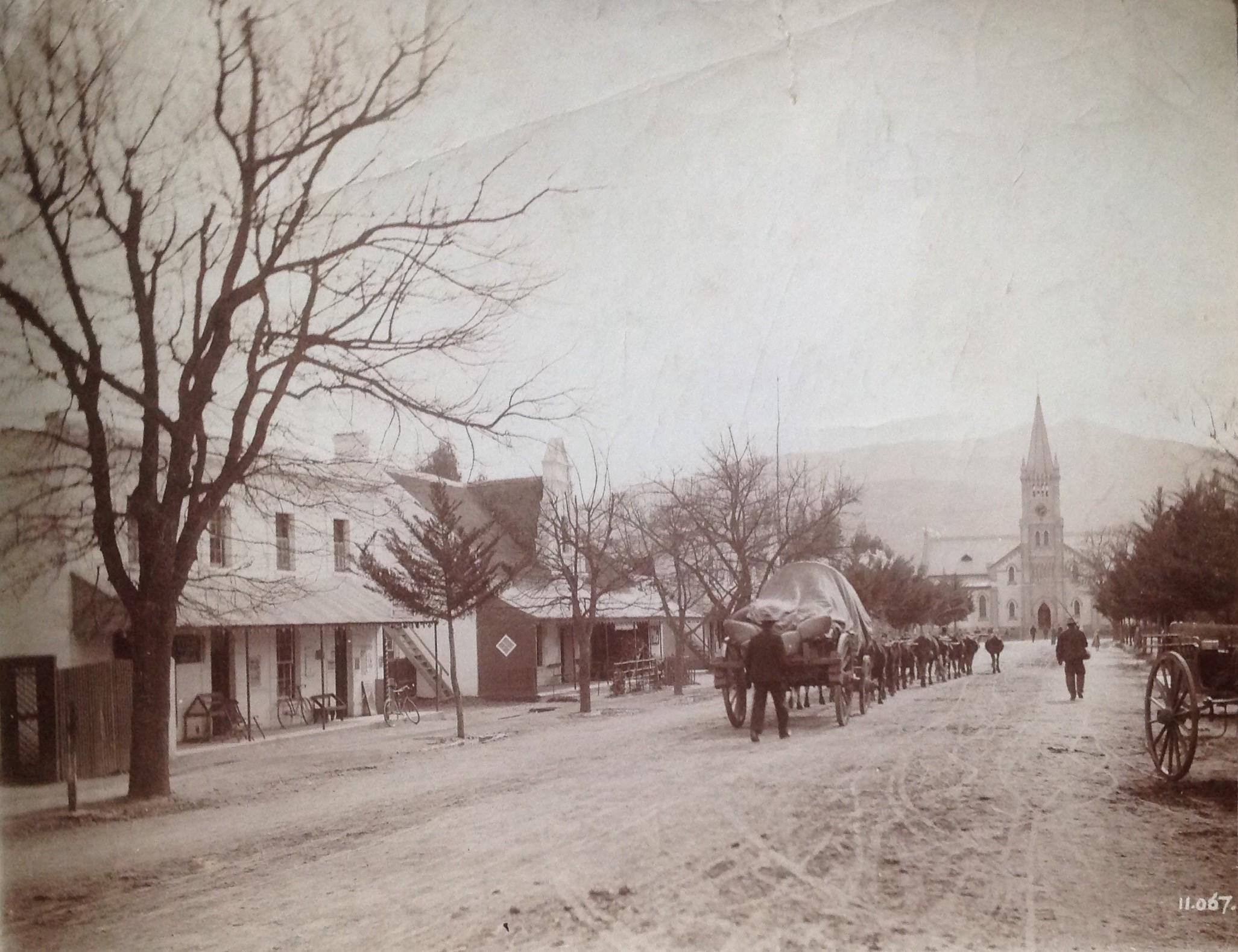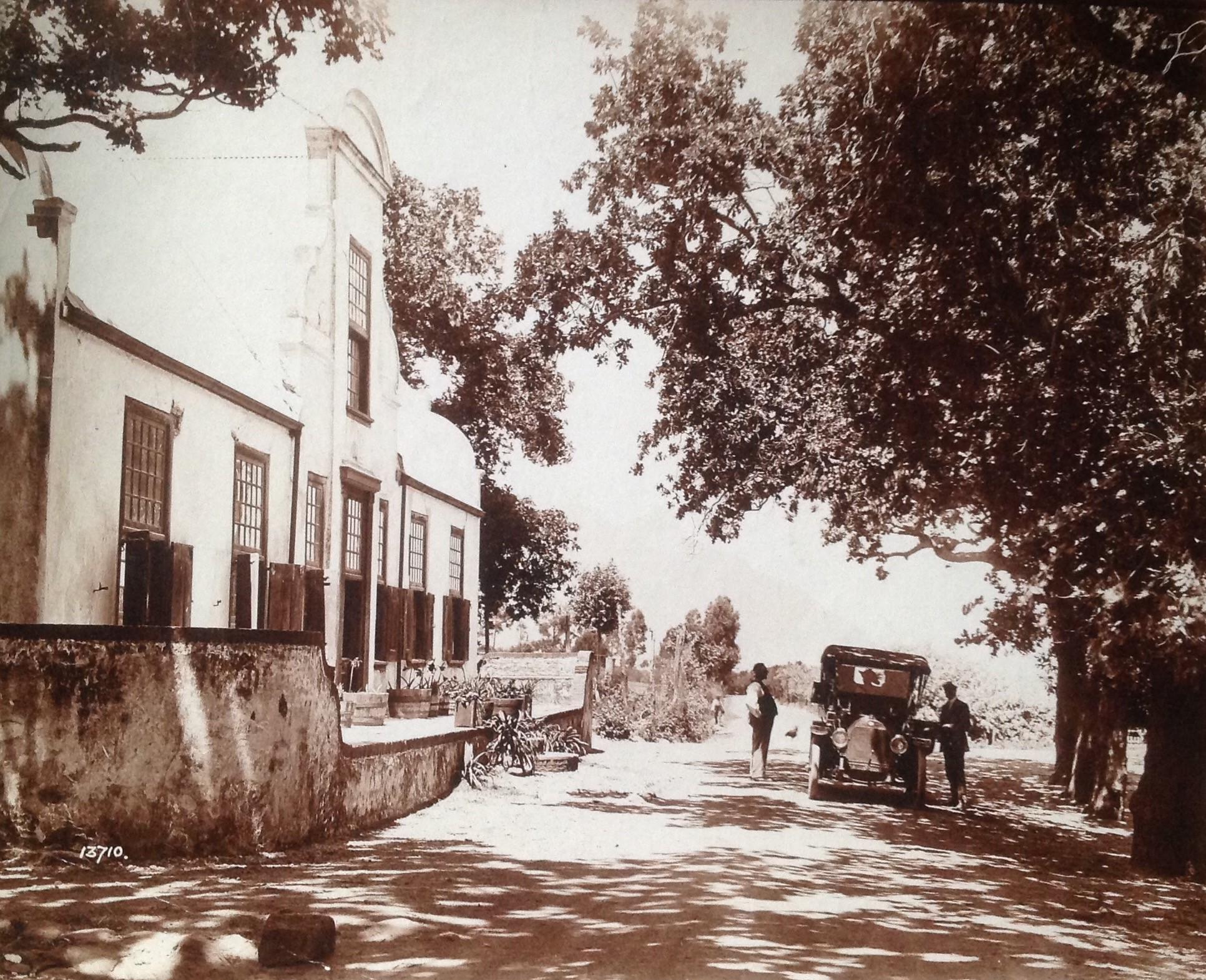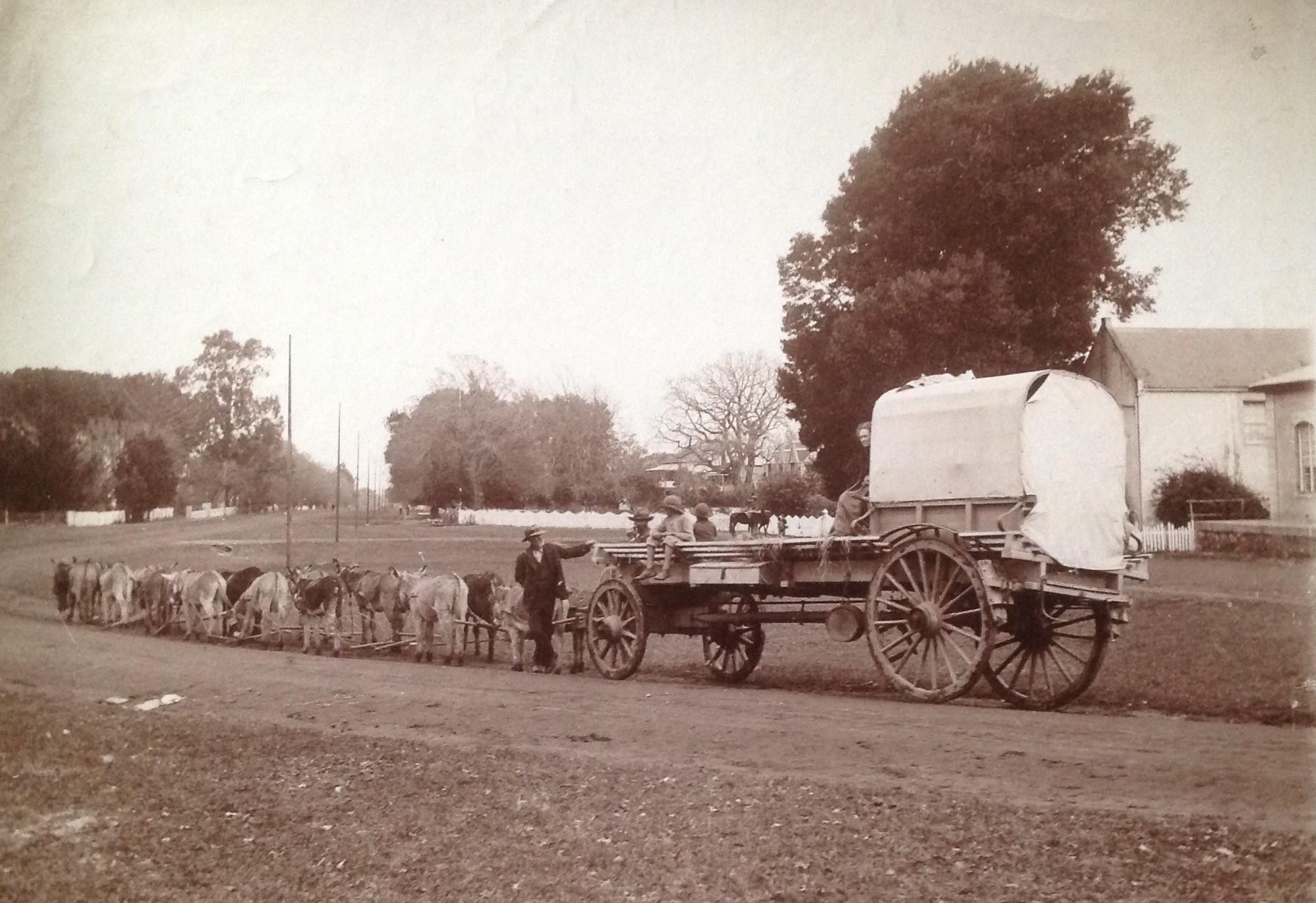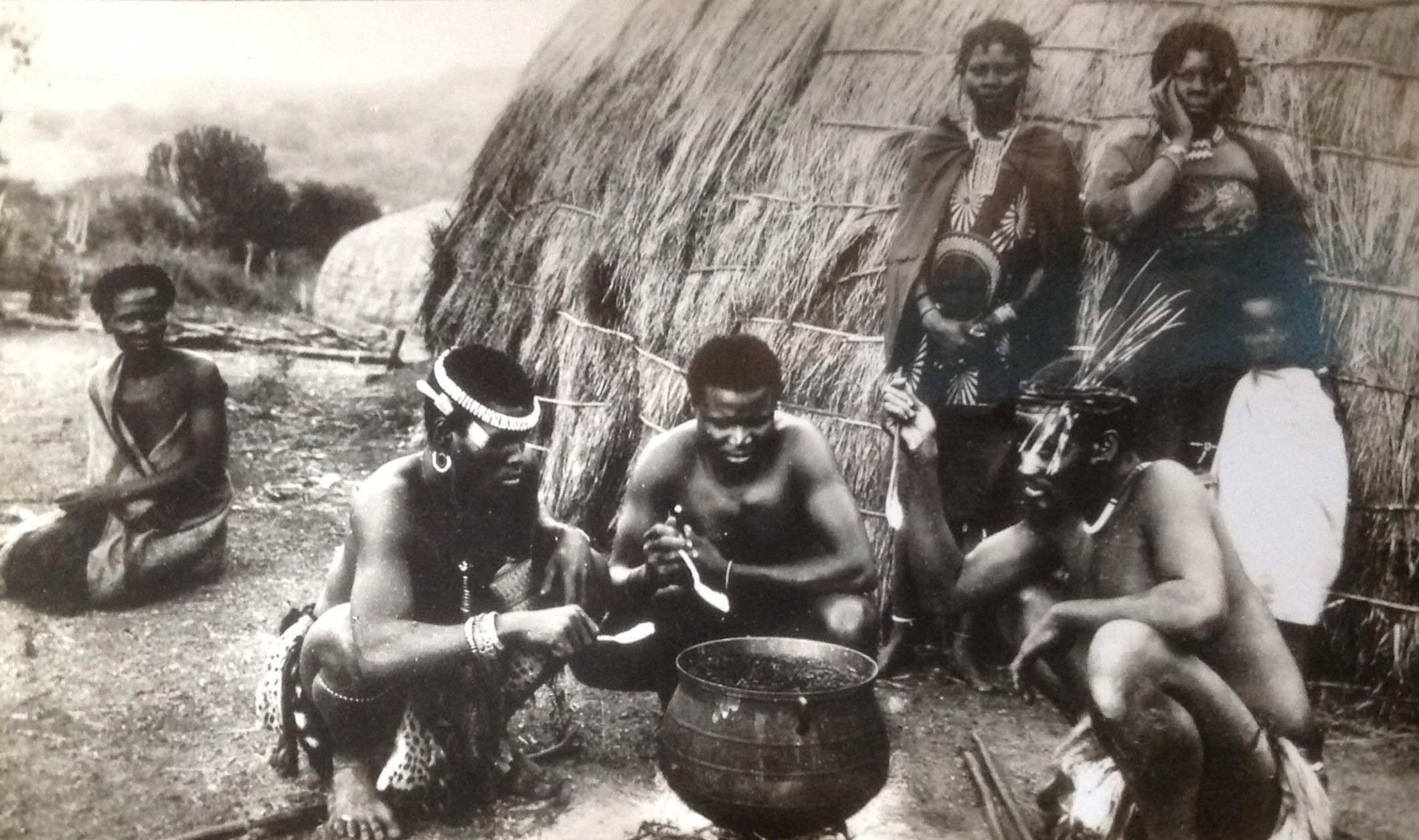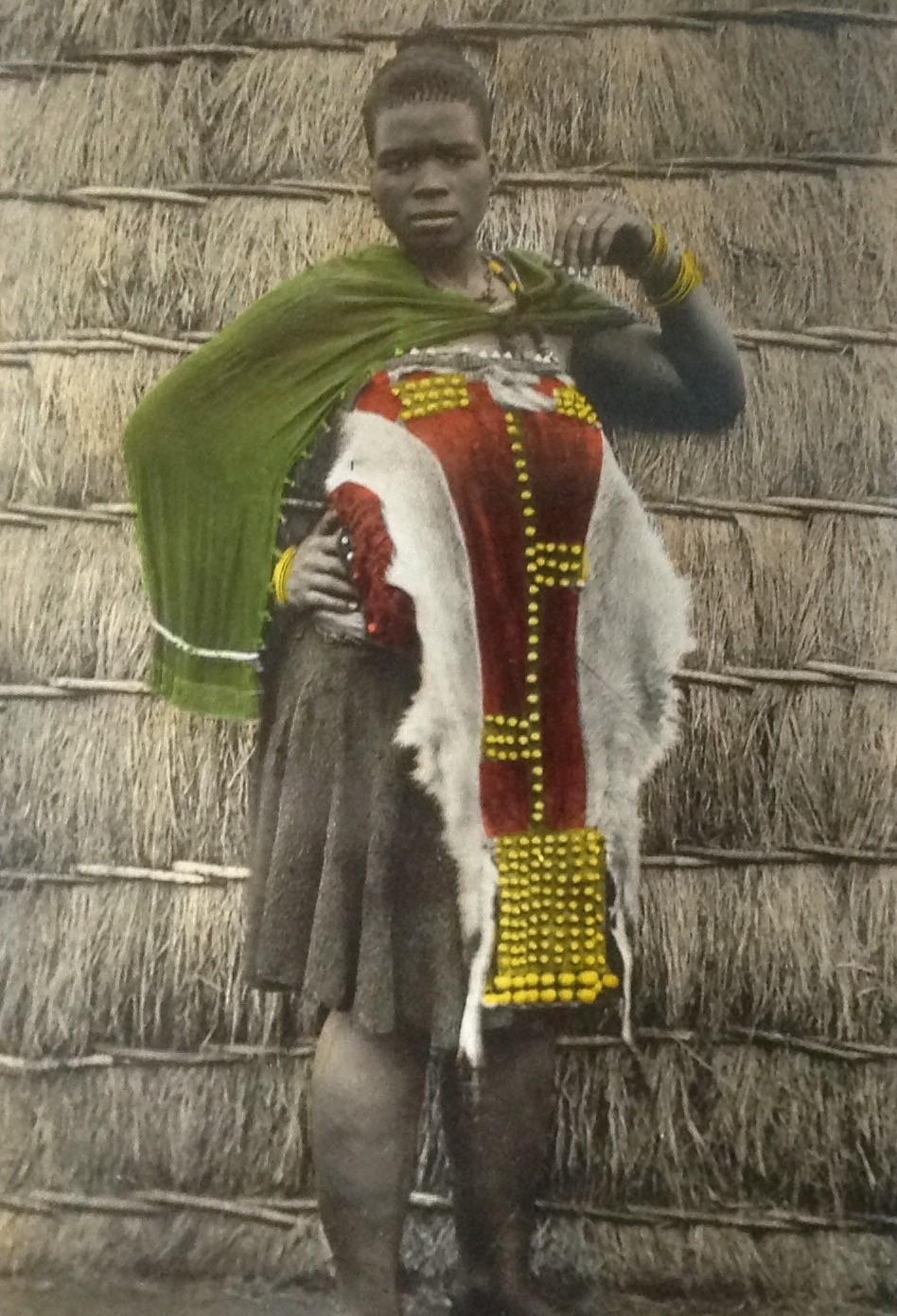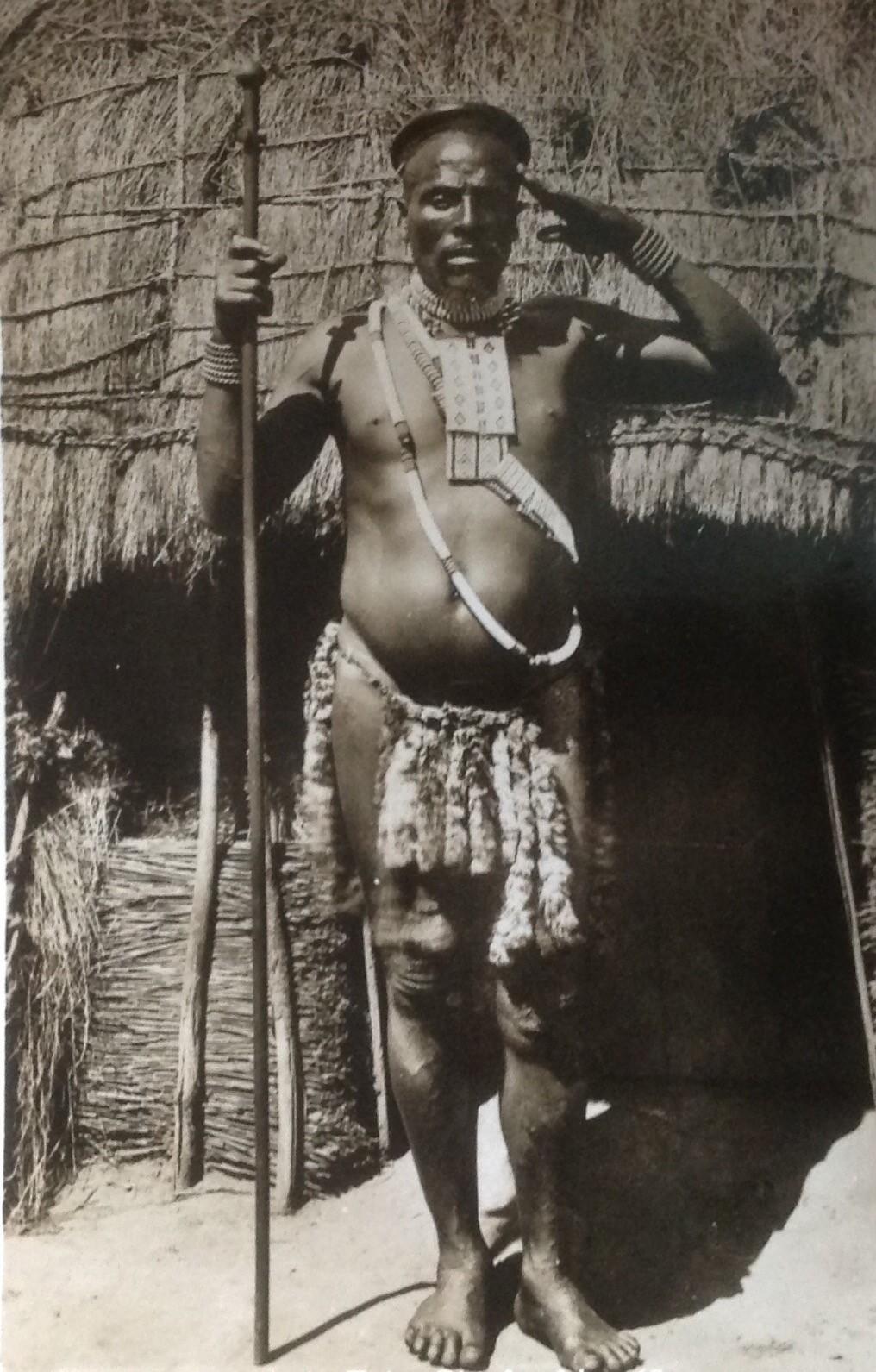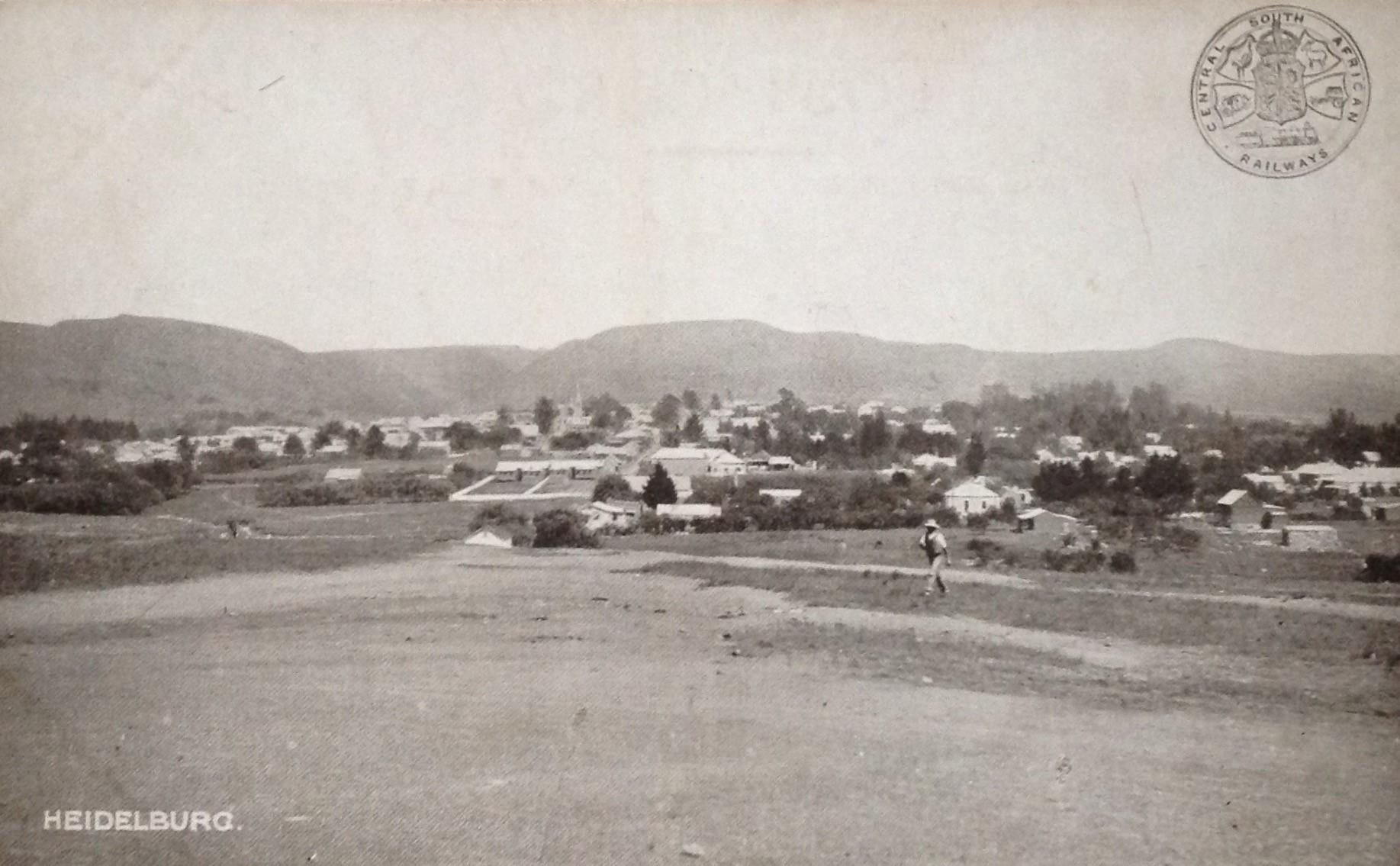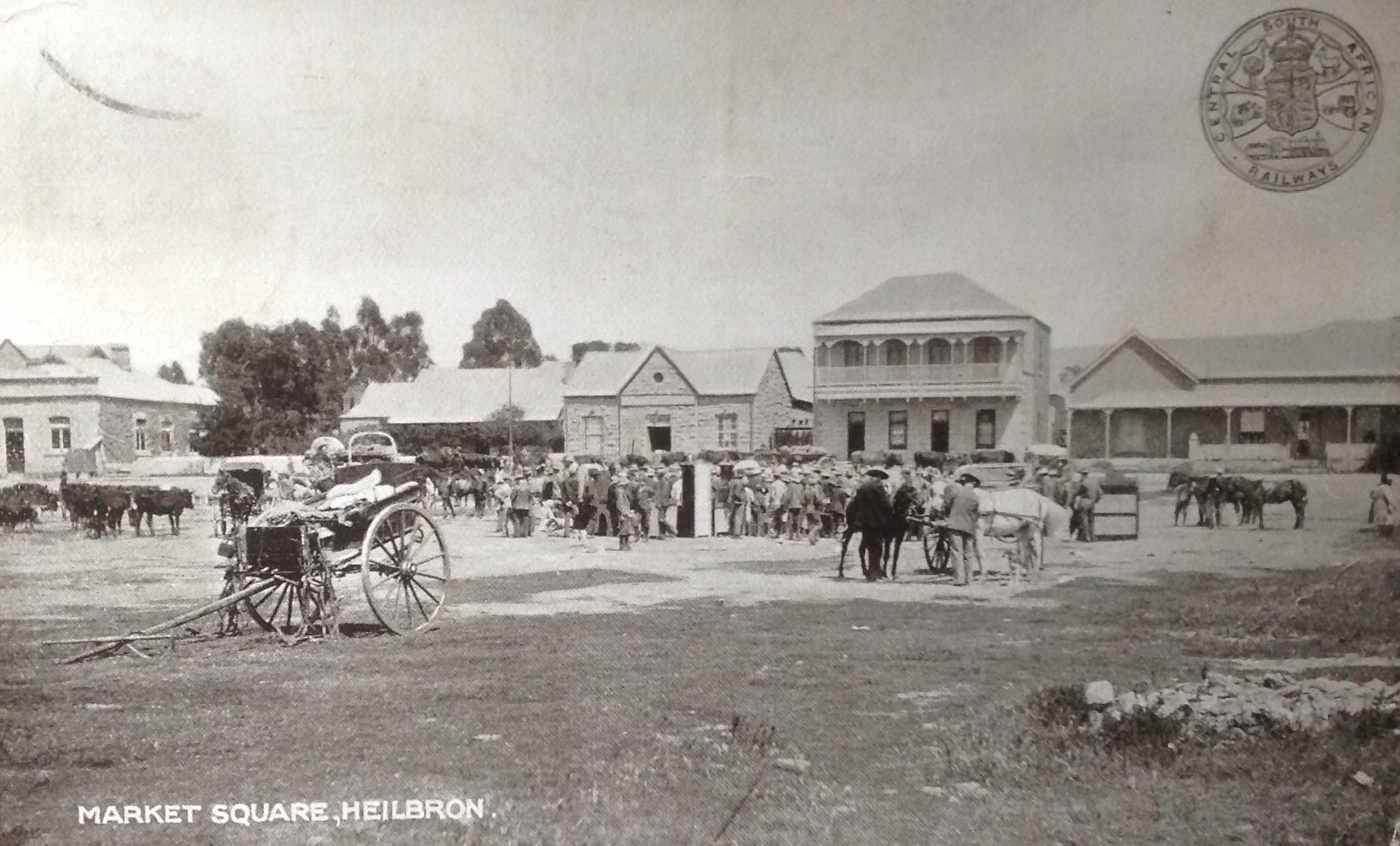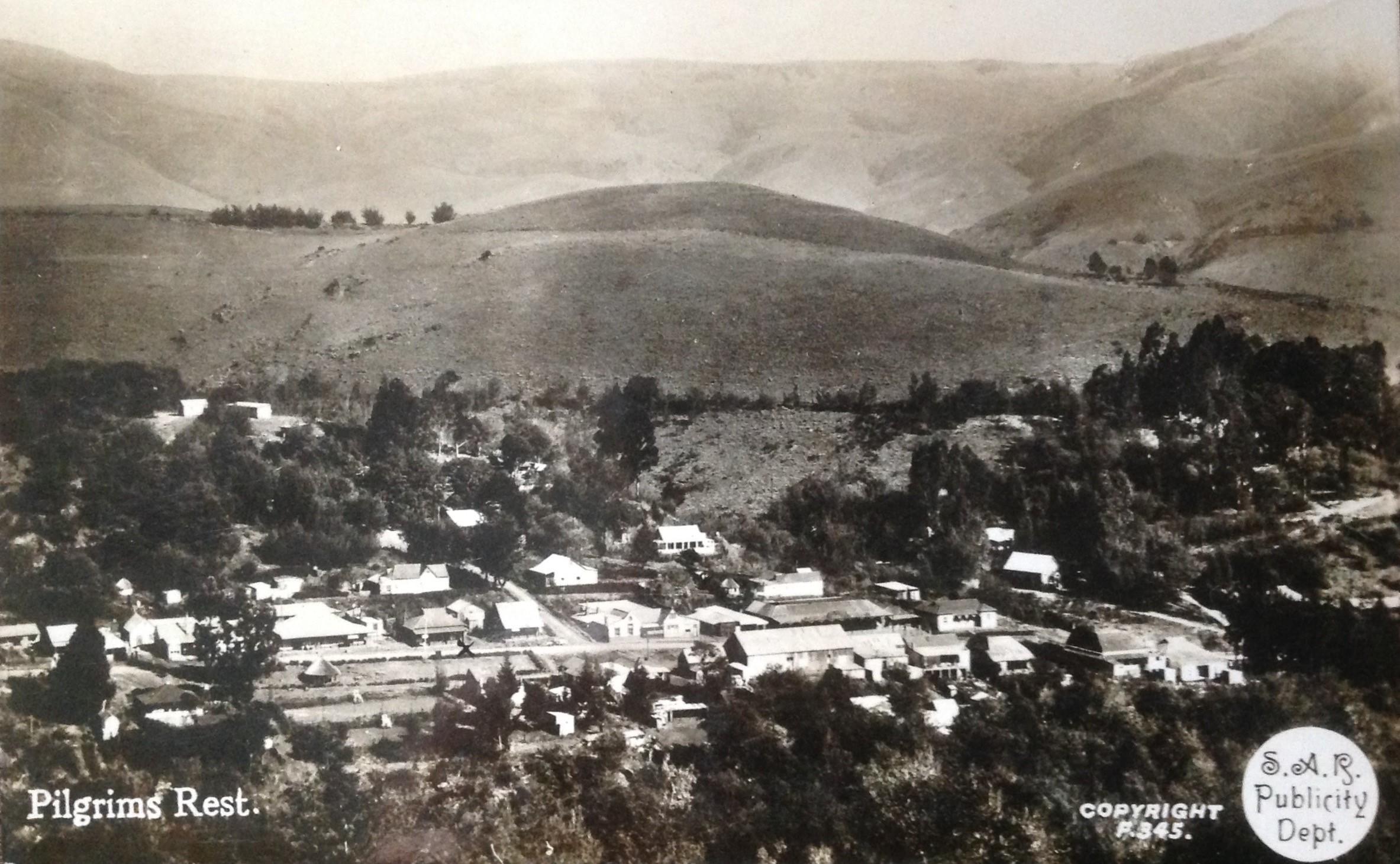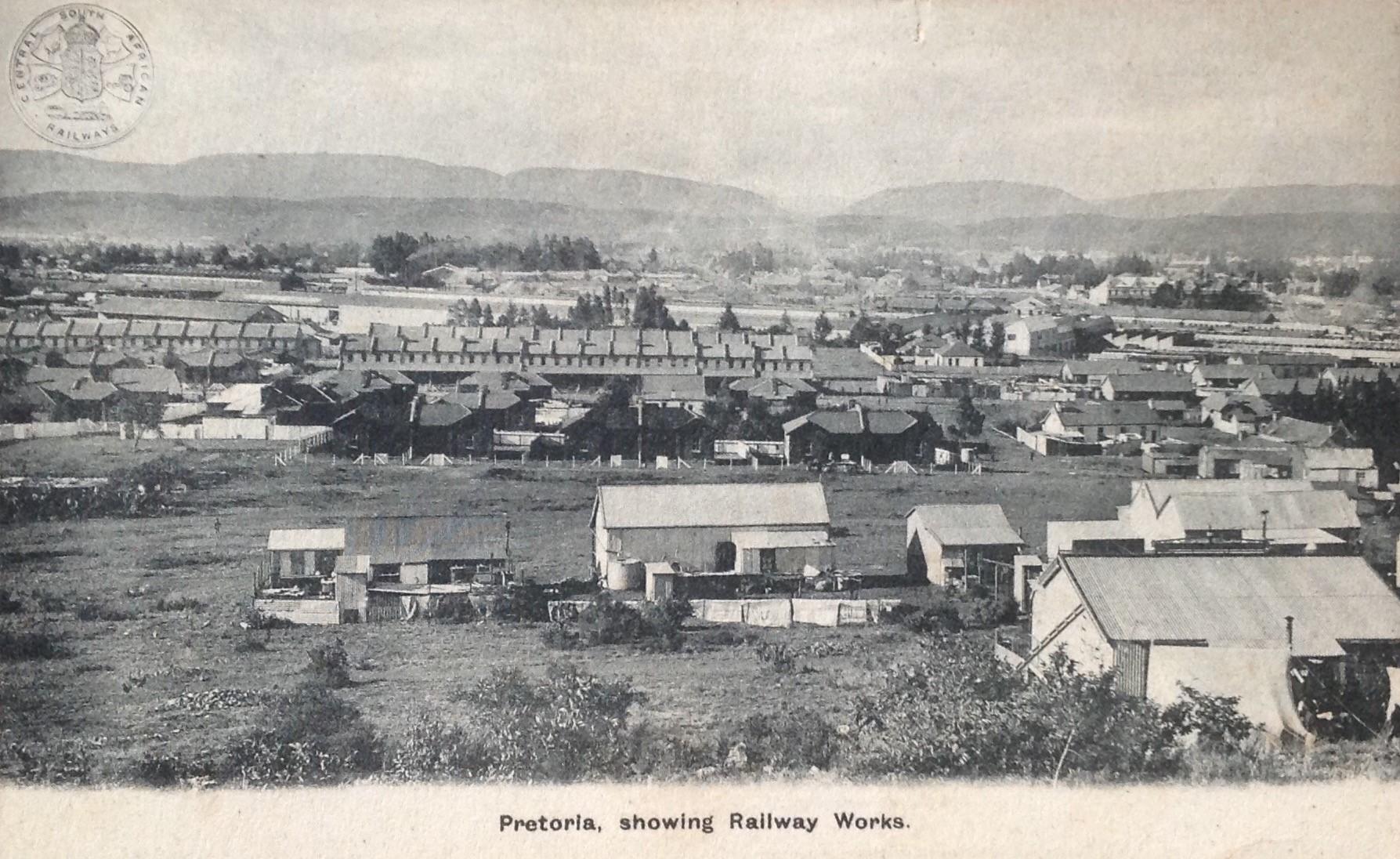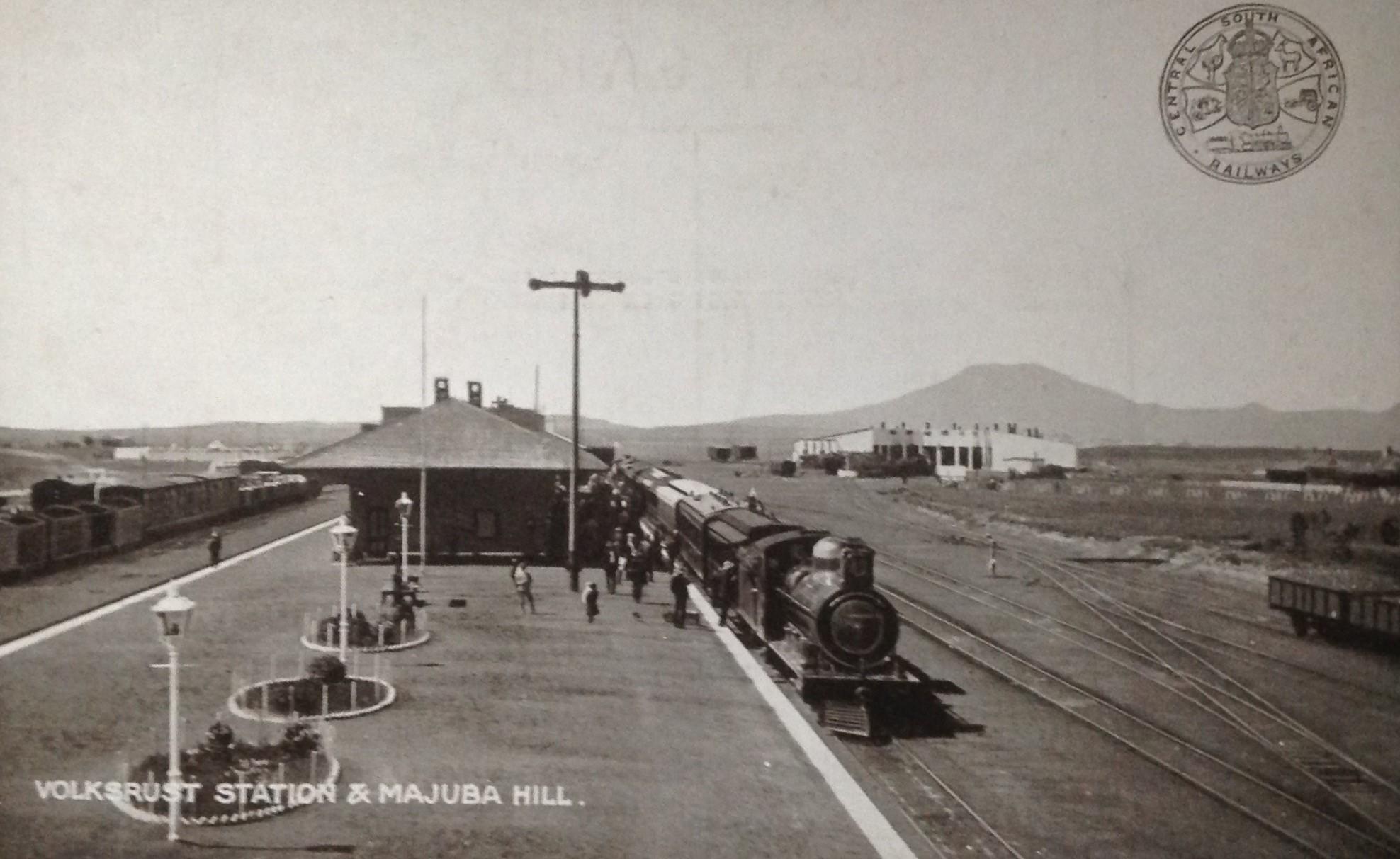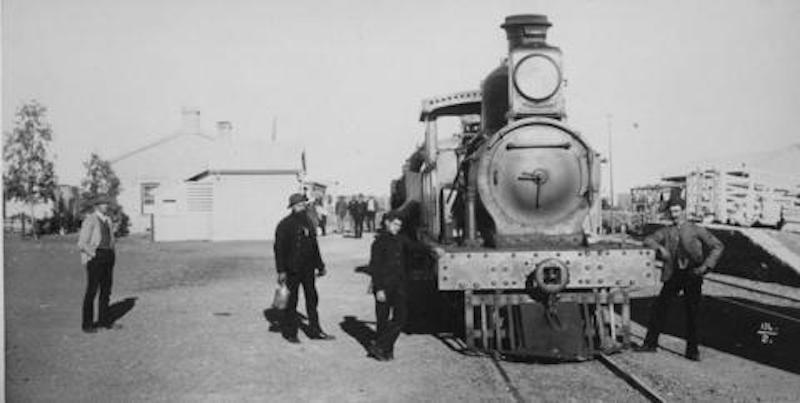
Disclaimer: Any views expressed by individuals and organisations are their own and do not in any way represent the views of The Heritage Portal. If you find any mistakes or historical inaccuracies, please contact the editor.
Picture this, the year, around 1915 - Surrounded by an atmosphere of dust and the noise of motor trolleys and mule wagons stood this old wood and iron building which for many years housed the staff of the South African Railway (SAR) photographic works attached to the then publicity department.
The dilapidated exterior of the building portrayed no indication to the outsider of the amount of activity and photographic creativity that took place amongst its walls.
The building referred to here was situated on the roadside of the great yard of Kazerne goods station in Johannesburg.
This article attempts to acknowledge and honour those men who were attached to early the South African rail photographic section, based in this building following a merger of rail services during 1911.
1. Introduction
Early South African photographers can simplistically be divided into three broad categories, namely professional / commercial, non-commercial (typically government departments) or the amateur photographer.
To date, historians have not awarded early non-commercial South African photographers the recognition and acknowledgement they deserve.
In a recent article on the history of South African Photography (click here to view) to which an updated register of South African professional/commercial photographers from before 1915 was attached, it was pointed out that the list excluded photographers employed within governmental entities – such as those employed by the police and prison services, medical institutions, agricultural services, military, aerial or railway photographers.
The primary intent with this article is therefore to record non-commercial photographers who were active within the early South African railway structures.
Photographers attached to the South African Railway publicity department generally did not seem to have any significant status within the railway organisational system. Whilst referred to as photographers in certain articles, they were in some instances also recorded as being administrators.
In acknowledgement of the photographic end results produced by these men (no female photographer within the railway structures has been identified to date), some of their photographs are also included in this article.
The secondary intent is also to capture extracts from photographic articles, which makes for interesting reading, as they appeared in the early SAR magazine publications.
Many of the images produced by railway photographers have survived and surface on a fairly regular basis. These images are either in the form of standard photographs, postcards or magic lantern slides. SAR published postcards generally contain an emblem or some printed confirmation that the photograph originates from the SAR publicity department (or its predecessor). Sadly, the photographic artists of a majority of these images remain unknown to us in that their names were not recorded on photographs.
In a recent article on magic lantern slides (click here to view), I also reflected on the magic lantern slides produced by the very same SAR publicity department. During my research for that article a vast South African themed magic lantern slide collection at the Johannesburg based Transnet Heritage Library Photo Collection was brought to my attention.
Significant about this magic lantern slide collection are the unique wooden boxes in which these slides are stored. These boxes each have a thick leather carrying strap. As part of the South African Railway (SAR) publicity campaigns, these boxes were then sent to destinations such as the USA (New York & Pennsylvania amongst other) and multiple other European cities. Whilst South African embassies may have been the primary recipients of these boxes, the probability is not excluded that they were also destined to foreign travel agents, photographic distributors and so on. These boxes were returned to South Africa from where they would then be redistributed to the next destination. The probability exists that some of these boxes containing the magic lantern slides never made it back home to South Africa.
Interestingly enough, a 1911 SAR annual report refers to the “energetic advertising” by the SAR publicity department in producing these magic lantern slides. This confirms that there was a high production of lantern slides for distribution worldwide.
In constructing this article, much reliance was placed on South African Railway magazines between the period 1905-1940 (see Drisa.co.za).
Also see article by Haarhoff (2019) on the history of South African Railway Magazines (click here to view).
2. Brief South African rail history
The first recorded rail line in South Africa was in the Western Cape between Cape Town and Wellington (1859).
Cape Town to Wellington Railway Plans (Antiquarian Auctions)
The first passenger carrying service in South Africa opened on 26 June 1860. This was a small line of about 3.2 kilometres built by the Natal Railway Company, linking Durban with Harbour Point.
Shortly thereafter, the rail industry became sufficiently commercialised in order to start marketing its services and destinations. This resulted in the establishment of three provincial advertising departments, which in turn resulted in the appointment of the first photographer as early as 1894.
The Central South African Railways (CSAR) existed between 1902 and 1910. This entity operated the public railways of the Transvaal Colony and the Orange River Colony. During the Anglo-Boer War, the Imperial Military Railways took over the Orange Free State Government Railways, the Netherlands-South African Railway Company and the Pretoria-Pietersburg Railway.
At the end of the war during 1902, the Imperial Military Railways became the Central South African Railways. This is an important aspect in that it assists in dating picture postcards containing the CSAR emblem.
Following the creation of the Union of South Africa during 1910, the CSAR was merged with the Cape Government Railways as well as the Natal Government Railways to form the South African Railways.
3. The Photographic works of the SA Railways
The first handbook of any proportions, issued by the Railway Department to advertise South Africa as a travel destination, was published in Cape Town during 1897.
The photographic establishment of the three administrations that were concentrated into the publicity branch produced much useful work, disseminating photographic enlargements of South African scenery and industries in all parts of the world. Their work included the exhibition of views of railway coaches and the reproduction of photographs for the South African and overseas press.
With the amalgamation of the railways, the original advertising arrangements of the three railway administrations were concentrated into a publicity branch at the Johannesburg head office during 1911.
The photographic staff attached to the publicity department during 1915. Whilst none of the men have been named in the Railway article in which this photograph appeared, it is thought that the individual seated in the middle is EH Short. On his right is in all probability JL Smith. The men standing at the back are unidentified. Not all the men appearing on the photograph were photographers. As an example, DH Craucour, seated in the front (right) was a designer in the photography department (he passed away during 1923 following a brain tumour). Photograph extracted from a SAR magazine.
The work of this branch comprised:
- ordinary railway publicity work, such as the compilation and publication of newspapers, magazine and book advertisements, the preparation of guide-books, pamphlets and posters and the distribution of photographs;
- the control of advertising on railway premises;
- the management of bookstalls.
The co-operation of the principal municipalities of the Union was also secured in terms of joined advertising arrangements. The intention of such co-operation was to stimulate travel whilst benefitting the various travel destinations concerned, adding to the railway revenue.
It has also been suggested that the South African Railway Publicity department were the pioneers of film in South Africa in that they thoroughly “bioscoped” South African scenery and industries. Resultant films were hired to South African exhibitors and sold to bioscope distribution firms in England in that it was appreciated back then already that an active advertising campaign was required overseas.
The initial perception around South African Railway photographers would have been that they only photographed railway stock, rail bridges or rail stations. Their photographic spectrum was, however, much broader.
The advertising and photographic section of the Railway publicity department during 1925. This photograph suggests a significant growth in the staff compliment since 1911. Photograph extracted from a SAR magazine.
Whilst the photographic staff compliment for the publicity department was never large, it is not known what the staff compliment was at any point between 1894 and 1940.
Every week, the publicity department’s small group of photographers, along with a designer or two, processed and distributed scores of photographs which were utilised in illustrating numerous publications, handbooks, folders, advertisements and guidebooks. Photographic illustrations of South African ports, towns and villages also decorated the walls of waiting rooms, booking halls, offices, public buildings and libraries.
In addition to advertising, both within the Union and overseas, publicity was obtained through the medium of brochures and pamphlets by means of press advertisements, pictorial posters, circulation of films and lantern slides, distribution of illustrated travel articles to the press, preparation and distribution of photographs for press purposes and the exhibition of photographic enlargements in public places.
Scarcely a month went by without the introduction of some three or four new publications drawing attention to the attractions of a particular South African locality.
Photographers also joined excursion programmes at holiday times. They would also join long sightseeing train journeys between the South African main cities and Lourenço Marques, Victoria Falls or Bulawayo (of up to 15 days).
Amongst a variety of other themes, they would also photograph zoological gardens, public buildings or agricultural shows.
The decoration of rolling stock by means of attractive photographs received considerable attention and hundreds of such pictures were being exhibited in the railway carriages and saloons.
It has been suggested that the winter season brought with it the demand for the loan of sets of lantern slides for use in schools and lecture halls, resulting in the publicity department often times being severely taxed in meeting the demand. It is understood that reference here is made to the European winter season.
Instruction papers were written back then which had to be interpreted by the photographer. The photographer familiarised himself with what was to be taught to the student and would then go out on the road and capture pictures necessary to illustrate the lesson properly and helpfully.
Railway photographers captured their images, which were then printed and produced under the SAR label. Their names were hardly ever included on the photographs, which makes the research on individuals attached to the SAR publicity department even more challenging.
The South African Railway publicity department was renamed to the South African Railway Publicity and Travel department during the 1930s.
Combined photograph of the Railway public department’s photographic section during 1912. Photograph extracted from a SAR magazine.
4. Identified South African Rail photographers (1894 – 1940):
The names of photographers are divided into four sections, namely:
- Key figures – Photographers about whom some information could be obtained
- Lesser known - No additional information could be obtained
- Railway employees acting as photographers during the World Wars
- Other – inclusive of international visiting photographers
The photographers listed below does not purport to be a complete list of South African rail photographers active between 1894 and 1940.
4.1. Key figures:
Most of the photographers listed below were born in England.
- Collier Albert H (1876 – 1950)
Albert was born in England. He died at the age of 73. His death notice confirms that he was a pensioner from South African Railway and Harbour.
He married Maud Isadora Violet (born le Roes) during October 1931. He was a bachelor at the time, with her being 13 years his junior. The couple did not seem to have had any children.
It is recorded that Albert joined the publicity department during May 1911. Whilst attached to the publicity department, he served in the South West Africa campaign with the topographical section, only to be transferred to the Flying Corps of the overseas contingent during early 1916.
Whilst overseas, Collier was wounded in action during 1918. It is recorded that Albert was “severely gassed” during heavy fighting on the Western Front (see photograph below).
Collier did not practise as a photographer very long in that, shortly after the war, he transferred to the mechanical engineer’s department in Salt River.
Railway publicity department photographer Albert Collier. Photograph copied from a SAR magazine
“Springboks in hospital – Richmond – Surrey”. Sergeant Collier, in a hospital bed (right) after being “severely gassed” during the 1st World War. The soldier on left as well as the nurse are unknown. Photograph copied from a SAR magazine
- Ireland-Low J
Although little information is available on Ireland-Low, it is recorded that he was the Chief Air photographer of the SA aviation corps during 1923. In a Railway magazine article, Ireland-Low’s activity as photographer has been described as follows:
After a long break, Durban residents have again become accustomed to the drone of planes cruising over the town. Two De Haviland machinces of 300hp made continious trips, remaining aloft for a couple of hours at a streach and it transpires the airmen were engaged in connection with the model of this town which is being arranged for in connection with the British Empire Exhibition. Sergr-Major Ireland-Law (sic), Chief Air Photographer of the SA Aviations Corps, exposed some 250 plates during 12 trips…. It is understood that the whole of the photographs will be fitted into a complete panoramic picture.
Later the Commanding officer of the “Photographic School” at Swartkop Airbase in Pretoria, Major J. Ireland-Low, was presented with the M.B.E. by King George VI during the Royal tour of South Africa during 1947.
A street in Valhalla (a Pretoria suburb next to the Swartkop Airbase) is named after Ireland-Low.
- Keeling Ernest Guy Methuen Walford (1899 - 1982)
Born in Croxley Green (England), Keeling arrived in South Africa as a 6-year old. It is recorded that during his school years, Keeling acquired a plate magazine camera outfit at the outrageous price of 50 shillings and subsequently won several prizes in photographic competitions.
Keeling joined the South African Railways (SAR) in Doornfontein during 1915, but only joined the photographic section during the early 1920s.
Described as a career photographer par excellence, he became the chief photographer of the publicity department during 1938. Cliff Maree succeeded him as chief photographer when Keeling proceeded on pension during 1960.
Keeling was involved in both world wars. During the 1st World War, he served 6 months with the RAF, but owing to injury, was discharged for medical reasons. He re-joined the South African Infantry (SAI) during June 1918 but was again wounded at Méteren (France) during August of the same year.
During the 2nd World War, he was attached to the South African Air Force (SAAF) as a photographer.
Keeling married a colleague, Mildred (Molly) Mary Sampson (born Boksburg 1904), in Turffontein on 4 July 1923. The couple had three children: Phyllis Alma Keeling born on 15 April 1924, Victor Redvers born on 6 August 1928 and Patricia Mary Keeling born on 17 October 1932.
The family proudly curates a 1947 Royal tour photo album put together by Guy Keeling. He joined the train journey with the Royals between the various South African cities as the officially appointed SAR Publicity department photographer. He also photographed young princess Elizabeth on her 21st birthday while on the tour.
Keeling’s grandson, Brian, suggests that Molly at one point did all the photographic development for Guy in that they had dark room facilities at their residence.
Keeling was also an honory game ranger. The couple loved the spending time in the Kruger National Park, where Molly sadly lost her life following a freak vehicle accident during the early 1960s.
Railway publicity department photographer Guy Keeling. Photograph copied from a SAR magazine
- Short - Edward Henry William (1862 – 1947)
Short was born on 26 October 1862 in Middlesex, England. He passed away at his home at New Milton, Hampshire, England during September 1947, aged 85.
Prior to his stint in South Africa, Short was in the service of London and South-Western rail company.
He joined the Cape Government Railways during November 1891 and took up the role as photographer as early as 1894, where he was in charge of the photographic branch. Short became the first appointed senior photographer within the South African Railway structure during 1907. During 1911, he was transferred to Johannesburg, in the same role he held in the Cape, and managed the work at Kazerne (the building described at the opening of this article).
He was the first person to hit on the idea of publicising the Cape Rail system through the picture postcard, resulting in him travelling the Cape Colony, between 1906 and 1908, for subjects worthy of his discerning camera. Through his photographic efforts he brought the railways and the Cape Colony to the notice of the outside world.
Over 6 feet tall, Short was described as the publicity department’s “Father of Photography”. He turned, what to him was an absorbing and useful hobby, into the most valuable publicity asset the railways ever had.
It has also been recorded that he on occasion would fulfil the role as a “lantern operator” during magic lantern presentations to the public or selected audiences.
Short proceeded on pension on 1 January 1916. A presentation of a silver cigarette case, suitably inscribed, was made by SS Watkinson. Short returned to England at the time of his retirement.
Short married Port Elizabeth born Kathleen Mary Lynch during June 1912. She was aged 24 and he 49 at the time of their marriage in Johannesburg. After his retirement, the couple lived in the Channel Islands for a few years before relocating to Hampshire. The couple had no children.
Unlike as is the case for his contemporaries, much of Short’s photographic work, for some unknown reason, has been recorded against his name (Also see Drisa.co.za).
Railway publicity department photographer EH Short who is thought to have been the first appointed railway photographer in South Africa (during 1894). Photograph copied from a SAR magazine
Photograph captured by EH Short during 1895 showing Fraserburg train station in the Western Cape. Photograph extracted from Transnet Heritage Library (THL) via Drisa.co.za
EH Short photograph captured during 1895 showing Kleinpoort train station in the Eastern Cape. Photograph extracted from Transnet Heritage Library (THL) via Drisa.co.za
EH Short photograph captured during 1895 showing Mortimer train station in the Eastern Cape. Photograph extracted from Transnet Heritage Library (THL) via Drisa.co.za
EH Short photograph showing Thomas River trains accident scene on 5 December 1895 (Eastern Cape). Photograph extracted from Transnet Heritage Library (THL) via Drisa.co.za
EH Short photograph captured during 1895 showing Toise train station in the Eastern Cape. Photograph extracted from Transnet Heritage Library (THL) via Drisa.co.za
EH Short photograph captured during 1895 showing Atherstone train station in the Eastern Cape. Photograph extracted from Transnet Heritage Library (THL) via Drisa.co.za
Singleton Frederick (1878 – 1957)
Frederick was born in Cheltenham, England during 1878, and arrived in South Africa with his parents during 1893. In Durban his father established the printing firm, John Singleton and Sons, which Frederick joined during 1895, aged 17. This firm also did the intial printing of the first South African railway magazines published. He remained with this well-known concern until 1911, when he joined the Railway Administration’s Publicity Department as photographer.
During the 1st World War, Frederick was on military service with the 9th SA Infantry in East Africa.
Practically throughout his entire career with the Railway Administration he was engaged in photographic work, but he also did brief stints in the Publicity Department’s accounts as well as the bookstall section.
Many of the images in railway compartments and photographic enlargements in this country’s public buildings, back then, originated from Frederick’s negatives. He was also involved in the manufacture of process blocks from which illustrations were printed in magazines and other publications. It was whilst he was working with his father that he produced process blocks, where he also carried out considerable work as printer, lithographer, bookbinder, embosser and illuminator.
One of his noteable achievements was his contribution towards the production of a book wherein the battlefields of Natal were featured in picture and story. The photographs illustrating the pages all having been taken by him, in many instances whilst the war was at its height all around him. General Buller allegedly described this publication as most interesting.
One of the pioneer publicity publications issued during 1899, under the auspices of the SAR, was a brochure entitled: “A tour on the South Coast Line of the Natal Government Railways”. Close to 100 photographs appeared in this brochure, all captured by Frederick.
During King George V and Queen Mary’s visit to Natal, Frederick also had the honour of taking portraits of the Royal visitors.
After 27 years’ association with the Railway Administration’s publicity department, Frederick Singleton, who was appointed the Publicity and Travel Departmenet’s senior photographer during 1931, entered compulsory retirement.
Frederick died during 1957, aged 79. He was married to Anna Jacoba Bosman Joubert (who died on 9 March 1954).
Railway publicity department photographer Fred Singleton. Photograph copied from a SAR magazine.
- Smith JL (? – 1948)
Smith arrived in South Africa during 1901 and joined the Natal Government Railways during March 1903 reporting to SS Watkinson. Eight years later, he came to the Johannesburg head office, taking up a position in the drawing office. During 1911 he joined the publicity department as cinema photographer and photographer. During December 1913 he took on the role as senior photographer.
He retired as chief photographer during 1931. He played a large part in pioneering the development of film in South Africa.
Smith undertook many important tours connected with official visits to SA by various parties, such as the Prince of Wales, the Empire Parliamentary Delegates (for which the senate passed him a vote of thanks and appreciation), British farmers, American tourists and other special work, all in which he maintained the high standard for which he was renowned.
In scenic photographic work, he has done a great deal in producing a number of outstanding films of the country’s scenic attractions, as well as others depicting construction work, all of which attracted very favourable notice when they were shown and received high praise from well-known film producers overseas.
It is also recorded that Smith was a champion shooter.
Very little information could be obtained about Smith. The initials J.L. in all probability stood for James Lionel. Both his sons were also attached to the South African railway. EH Sanderson-Smith was a staff clerk at the Cape Town catering department and JL Sanderson-Smith was a clerk at the passenger agent in Port Elizabeth. Smith also had a daughter, Dorothy Smith.
Railway publicity department photographer JL Smith who has also been acknowledged for his early cinematography work. Photograph copied from a SAR magazine.
- Watkinson SS
Watkinson, about whom little is known, has been recorded during 1909 as being an official photographer to the Natal Government Railways. Some photographs captured by him have been included in the railway magazine during 1917.
He was transferred to the Johannesburg-based publicity department, where he seems to have immersed himself as a senior journalist until his retirement during 1926.
During 1913, he did a magic lantern presentation to the local mountain club in Cape Town.
Publicity department senior journalist Watson (top right) who initially started his career as photographer at the Natal Railways. Photograph copied from a SAR magazine
4.2. Lesser-known photographers
Brief references were made of the photographers in Railway Magazines as per list below. The year of mention is stated in brackets.
- Bold JM (1920)
- Drage JA (1914)
- Gladstone H – Aerial photographer in Cape Town (1926)
- Harbison M – Harbour Engineers Department (1923)
- Hobbs JW – Photographic assistant – resigned January 1912.
- King RW – Appointed during 1939 with a promotion during 1942
- Leigh H – Assistant photographer Maritzburg (1908)
- Maree Cliff SD – Became chief photographer during around 1960
- Morren P (1911)
- Simmonds Ernest (1912). Not clear whether he was a photographer or only contributor to railway magazine
- Van Rooyen (1914)
- Wagner J (1939)
4.3. Railway employees fulfilling photographer duties during the war
Some SAR employees, employed in roles other than photographers, have been recorded as being photographers during either the 1st or 2nd World war. Some of the men were:
- Watson RS – SA Squad Royal Flying Corps (East Africa) – 1st World War;
- Kelly LF & James ALA are recorded as having had the rank “photographer” in the SAAF during 1940
Photographers whose names were listed on the Publicity Department’s Great War (1914-1919) roll of honour included Collier, Singleton and Bold.
4.4. Other
The individuals listed below were either keen amateur photographers contributing to the Railway Magazine or foreign photographers who assisted the then publicity department:
- Walton J, Rev. (1911). Was an interested resident and keen photographer who compiled a complete series of views depicting the work on the Gamtoos river bridge in various stages of progress;
- Crowhurst, G – amateur photographer who made regular contributions to the railway magazine;
- Lieb, JH (1928) – Expert American cinema photographer who assisted the SAR in their most important publicity undertaking by assisting in professionally filming a broad spectrum of South African scenery;
- Carter, Melville (1929) - National Geographic Society.
The Railway magazine did not exclusively rely on material produced by the publicity department’s photographers. Photographs by well-known photographers of that era were also included, or made reference to, in the magazines. Some of these photographers included Duggan Cronin, Hugh Exton, Jane Plotz, Arthur Elliot and Ravenscroft.
Robertson street scene (circa 1905). A photograph captured by an unknown Railway publicity department photographer for inclusion in a Union Castle advertising brochure or magazine. Photograph from the HPRC.
Street scene between Cape Town and Hout Bay (circa 1910). A photograph captured by an unknown Railway publicity department photographer for inclusion in a Union Castle advertising brochure or magazine. Photograph from the HPRC.
A family on the move, relying on their “ox-wagon” being pulled by 16 donkeys - George (circa 1908). A photograph captured by an unknown Railway publicity department photographer for inclusion in a Union Castle advertising brochure or magazine. Photograph from the HPRC.
4.5. Interesting snippets extracted from the Railway Magazines
Short articles, written for the Railway Magazines by the publicity department’s photographers, intended for the amateur photographer, make for some very interesting reading.
Below are some snippets extracted from these articles:
- One author referred to the photographer as “Operators of eminently useful instruments”
- The purchaser of a camera is saddled with a heavy piece of apparatus characterised by a most expensive appetite for films or plate
- A great deal of disappointment arose in the early days of cameraitis – Cameraitis is defined as: "a condition whereby a photographer is always seeking the next best thing, yet failing to appreciate that their current camera delivers all the bells and whistles they will ever need”
- A department photographer, referred to as Mr S, insisted on having his own coach at the Beaufort West station, only to find out that someone died recently in his self-allocated coach. This is either in reference to Short, Singleton or Smith
- This little “box of tricks” is really one of the best companions one can have on a vacation of any kind
- It is not to be denied that the camera, which produces a negative about the size of a postcard, is an eminently useful instrument
- Each class of camera has its own special sphere of maximum usefulness, and the “little lady” class has a versatility which is not surpassed by any of her bigger brothers and sisters
- The “little lady” is a real little treasure to the amateur who desires the maximum of pleasure from a camera at a minimum of cost. Cameras of the “little lady” type cost from £2 up to £6. Though fancy prices much above this can be given. The £3 or £4 instrument is much the same as the cheaper type, but the lens is better and the extra money expended on the lens is a good investment, though quite good pictures may be made with the 40s camera. The weight of the larger one will be about three pounds and the “little lady” class about half a pound. It is very difficult to induce back to forgive the heavier load if one has to support it for any length of time
- One erroneous idea which leads to the purchase of unnecessarily big cameras is the supposition that the larger instrument is the better of the two in dull weather. Size of bellows has nothing to do with the matter because, as already pointed out, quality of the lens is the critical factor
- Quite recently, a novice was seen pointing a camera at a lady who stood in the deep shadow of a dull, narrow street. The camera was probably fitted with an ordinary lens, doubtless good for its class, but not sensitive enough to the purpose that it was being put. They were both not a little delighted with their “pasttime” whilst he wasted a number of films on the object of his admiration. A rough calculation led the observer to believe that the exposure that was required should have been at least ten times longer than what was given. The subsequent result must have been so ghostly that even the tears of his disappointment which were shed over it would look solid in comparison
- The idea of a hobby is to dissipate time in an interesting and health-giving fashion and this the camera does. It drives its owner over hill and dale in search of green fields and pastures new, and when the long, dull evening inevitably arrives, and one is “all dressed up and nowhere to go”, picture making by night, either with or without the enlarging apparatus, will dissapate all signs of ennui, and engender that feeling of “something attempted something done” which brings a night’s repose (This was stated during 1916!)
- There is no doubt that photography is the most fascinating of hobbies. Whilst it is absorbing and gives immense pleasure in the execution of the work, the pictures taken during a holiday give unintended delight, not only to oneself, but also to friends. Some holidays are never forgotten and it is pleasant to be able to refresh one’s memory by the aid of some faded notes in an old diary and pictures taken in the past and perhaps happier times. With such reminders, one can again follow the holiday of long ago step by step and recapture some of the charm that held one then. By means of a camera, one can make an interesting record of every holiday by placing the pictures in proper order in an album and writing underneath a brief record of the happenings at that spot
- To the scribbler, the camera is especially valuable because it has the added advantage of being useful in connection with writing as an illustrated article will often be accepted by a paper or magazine where one without pictures will not have a chance. The longer photos of public events are kept, the more valuable they become as a rule and to be able to produce them at the psychological moment is often of financial value to the far-seeing one
- If the one with the camera keeps it handy as well as his presence of mind, he will find opportunities of “snapping” many ludicrous little incidents on trek and in camp, which he will find, as a rule, are more popular with the party than his more studied efforts – especially with those who do not happen to be in the picture. One word of warning to the over-enthusiastic; don’t “snap” things indiscriminately that are not worthwhile. Keep in mind that what you want is beautiful, the interesting, and as true a record as possible. Personally, I never risk being without at least one unused film in my camera, as I always expect something wonderful to be revealed or happen for which I must be ready. That does not always happen, does not detract a scrap from the excitement and feeling of adventure with which I go along with the camera “at the ready”, as it were. Sometimes of course, your hopes are fulfilled and then, oh! How thankful you are that you were prepared. Real lovers of the camera never move without it because they have learnt by unhappy experience that if, by any chance, it is left at home that is sure to be the particular time that something really worthwhile happens. Some serious lessons of this kind have taught the writer never to be parted from the camera; you may carry it a dozen times with no great result, but on the thirteenth an event of real value and importance happens and then you forget all about the twelve unproductive times – that’s the memory of the photographer! So, if you are keen, you will hang on to the camera as your best travelling companion at all times.
Even a joke was found in one of the publications: The photographer was drying his plates in the warm sunlight. “What are you doing there?” asked a friend. “Oh”, was the reply: “just airing my views”.
I cannot help but to wonder how much of our contemporary society understands this dry humour.
Picture postcard, published by the Railway publicity department post 1911, showing a Zulu family having dinner. This photograph was clearly posed for. The child on the right appears blurred due to movement at the time the picture was captured. The details of the photographer were not captured on the back of the card. Postcard from the HPRC.
Hand coloured picture postcard, published by the Railway publicity department post 1911, showing a Zulu woman. The details of the photographer were not captured on the back of the card. Postcard from the HPRC.
Picture postcard, published by the Railway publicity department post 1911, showing a Zulu chief. The details of the photographer was not captured on the back of the card. Postcard from the HPRC.
Picture postcard showing early Heidelberg in the then Transvaal (note the spelling mistake on the card). The details of the photographer was not captured on the back of the card. This card was published by the Central South African Railways department (pre 1911), the predecessor to the Railway publicity department, which was established during 1911. Postcard from the HPRC.
Picture postcard showing activity at the Heilbron market. The details of the photographer was not captured on the back of the card. This card was published by the Central South African Railways department (pre 1911), the predecessor to the Railway publicity department, which was established during 1911. Postcard from the HPRC.
5.1. Articles making reference to photographer activity
The railway magazines also contained some articles reflecting on photographer activity.
An official SAR photographer was sent to Verneuk Pan prior to Captain Campbell’s attempt at the motor speed record. During 1929, the pan was used by Sir Malcolm Campbell, who unsuccessfully attempted to break the land speed record in his Napier-Campbell Blue Bird Excellent photographs of this event were sent to London and have appeared in the overseas press.
A special type of aeroplane is being used for aerial survey of the irrigation works near Warrenton. The plane is one of the most interesting ever seen in South Africa. The forward part of the fuselage has a glass floor to enable the pilot to get the plane into the position for photographing the area under review. It is necessary for the pilot to maintain an equal level at a height of 10,000 feet to assist the photographer in obtaining scale. The plane is fitted with all the necessary equipment for photographic work and even has a dark room to facilitate obtaining results as quickly as possible.
Picture postcard showing early Pilgrims Rest. The details of the photographer was not captured on the back of the card. This card was published by the Central South African Railways department (pre 1911), the predecessor to the Railway publicity department, which was established during 1911. Postcard from the HPRC.
Picture postcard showing early scene of Pretoria rail works. The details of the photographer was not captured on the back of the card. This card was published by the Central South African Railways department (1911), the predecessor to the Railway publicity department, which was established during 1911. Postcard from the HPRC.
Picture postcard showing Volksrust railway station. The details of the photographer were not captured on the back of the card. This card was published by the Central South African Railways department (pre 1911), the predecessor to the Railway publicity department, which was established during 1911. Postcard from the HPRC.
Picture postcard showing the waterfall at Waterval Boven (Waterfall above) published by the Railway publicity department post 1911. The details of the photographer was not captured on the back of the card. Postcard from the HPRC.
Closing
The vast number of photographs produced by photographers, attached to the earlier South African Railway structures, has thankfully resulted in some nostalgic historical imagery being recorded for us to marvel over.
Those were the days, with the emphasis on the past tense. When South Africa still had a rail system to be proud of and with much emphasis being placed on proudly advertising South Africa as a traveling destination, both to South African citizens and foreign travellers.
Special acknowledgement
Without the significant work conducted by a group of volunteers, this research would have been a near impossibility. The vast collection of images and magazines, held by the Transnet Heritage Collection (THL), have been diligently catalogued and scanned by a group of volunteers under the guidance of Johannes Haarhoff (Volunteer Project Leader) and Yolanda Meyer (Information Specialist). All these historically important images and documents can be viewed on www.drisa.co.za. The website has an optimal search function.
About the author: Carol is passionate about South African Photographica – anything and everything to do with the history of photography. He not only collects anything relating to photography, but also extensively conducts research in this field. He has published a variety of articles on this topic and assisted a publisher and fellow researchers in the field. Of particular interest to Carol are historical South African photographs. He is conducting research on South African based photographers from before 1910. Carol has one of the largest private photographic collections in South Africa.
Main image: EH Short photograph captured during 1895 showing Klipplaat train station. This station used to be a major rail junction in the Karoo heartland (Eastern Cape). Photograph extracted from Transnet Heritage Library (THL) via Drisa.co.za.
Sources
- Digital Rail Images South Africa (Drisa.co.za) containing images from the Transnet Heritage Library (THL)
- Haarhoff, J. (2019). History of the SAR&H Magazine from 1905 to 1930 (theheritageportal.co.za)
- Hardijzer, C.H. (2020). Latent South African Visual History – Magic Lantern Slides. (theheritageportal.co.za)
- Hardijzer, C.H. (2020). Operators of “mirrors with memory” – South African photographers (1846 – 1915). (theheritageportal.co.za)
- Hardijzer Photographic Research Collection (HPRC)
- Natal Government Railway Magazines (1905 – 1907). (railways.haarhoff.co.za)
- Pivnic, L & Lewis, C (unknown – extracted 27 November 2022). Part 2: Midland main line Paterson to Alicedale (mobile.sites.google.com/site/soulorailway/soul-of-a-railway)
- South African Railways Magazines (1906 – 1910). (railways.haarhoff.co.za)
- South African Railways & Harbours Magazine (1916 – 1940). (railways.haarhoff.co.za)
- Unknown (2006 - Accessed November 2022). Is there such a thing as “cameraitis”? (dpreview.com/forums/thread/1693648)
- Ross, G. (2022). Hiawathas Photographing. (www.futilitycloset.com)
- Transnet Heritage Library (Drisa.co.za)
- Wikipedia (extracted 1 December 2022). Rail transport in South Africa. (wikipedia.org/wiki)
- Wikipedia (extracted 9 December 2022). Central South African Railways. (wikipedia.org/wiki)
Comments will load below. If for any reason none appear click here for some troubleshooting tips. If you would like to post a comment and need instructions click here.

